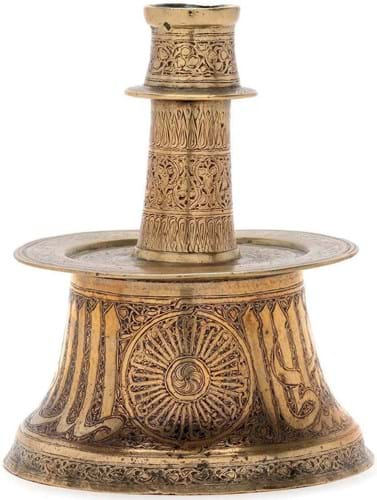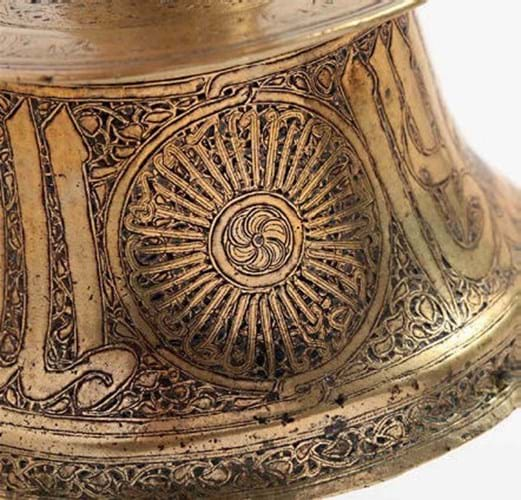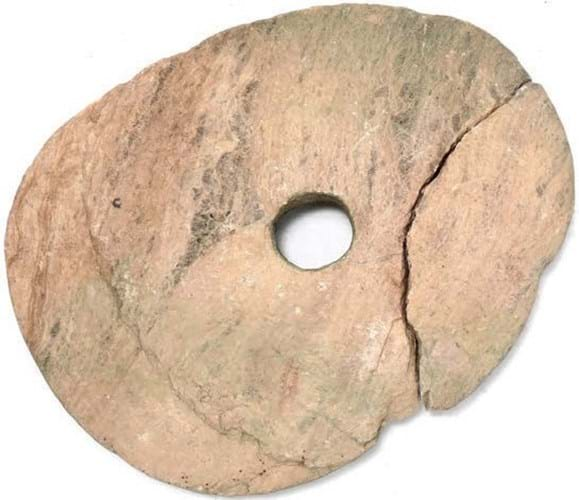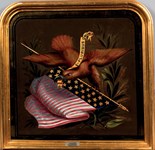
The 9in (22cm) high silver-inlaid brass candlestick was probably used in court ceremonies or celebrations to honour the reigning potentate – either Sultan al-Malik al-Nasir Muhammad ibn Qalawun (1293–1341), or his son, Sultan al-Nasir Hasan (1334-61).
The decoration is distinctive. By this period c.1320-60, the figural scenes that had appeared on much earlier Mamluk metalware made in both Egypt and Syria had been replaced by large calligraphic panels.

A detail of the Egyptian or Syrian Mamluk silver-inlaid brass candlestick, c.1320-60, $100,000 (£79,500) at Leland Little.
This example, with its typical profile of drum base, drip tray, cylindrical neck, and flared socket, is inscribed in Thuluth script with an acclamation. It reads: ‘Glory to our Master the Sultan, al-Malik al- Nasir, wise, diligent, and just, who exerts himself [in time of war], who stands ready [to protect the realm].’ Other inlaid motifs of flying birds, palmettes and six-petaled rosettes are also recognisable emblems of the Qalawunid dynasty, considered the apogee of Mamluk metalwork.
It came for sale from a consignor who had inherited it in the late 1970s. The buyer was an overseas gallery bidding by phone.
The 2ft coin

Rai stone ‘coin’ used as currency on the island of Yap, $15,500 (£12,300) at Leland Little.
A very different lot, but one that generated similar levels of competition, was a rai stone ‘coin’ from the Pacific Island of Yap. Estimated at $1000-2000, it hammered for $15,500 (£12,300), selling to a private collector outside the US.
Though universal currencies have since become the norm on Yap, rai stones are still used for status and important transfers of wealth. The largest of these stones, fashioned from carved and drilled crystalline calcite, can exceed 3m (10ft) in diameter and are recognised as one of mankind’s most unusual means of exchange.
Exports of stone currency from Yap were restricted from 1965 with very few examples coming to market since. This 2ft (60cm) wide example came for sale from a North Carolina collection with paperwork demonstrating its legitimate importation to the US over 60 years ago.
The auction house pointed to another of similar size and condition (it had been broken and was offered as two pieces) held by the Smithsonian. It is thought to date from the late 19th to the early 20th century.














